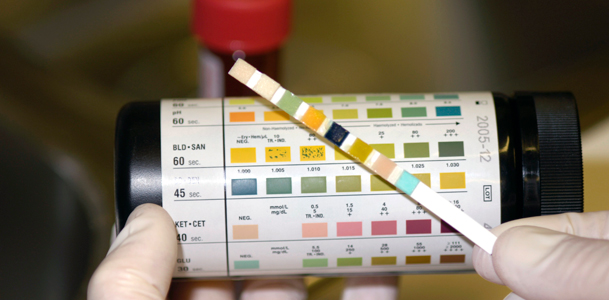SOME Australian experts have called for a higher index of suspicion for cancer when assessing women with visible haematuria in primary care.
The call comes after UK researchers found that women with bladder and renal cancers are more likely than men to experience delays in diagnosis.
A prospective national audit of 920 patients with bladder cancer and 398 patients with renal cancer, published in BMJ Open, found women required three or more pre-referral consultations more often than men. For bladder cancer, 27% of women required three or more primary care consultations before specialist referral compared with 11% of men. For renal cancer, 30% of women required three or more consultations compared with 18% of men. (1)
Dr Elizabeth Hovey, senior staff specialist in medical oncology at the Prince of Wales Hospital, Sydney, said GPs were far more likely to deal with cystitis than with bladder cancer, so could be “relatively nonchalant” about the presence of macroscopic haematuria in women.
“Haematuria in a man is never normal, whereas women, in their menstrual lives and with cystitis, may have experienced it in the past for benign reasons”, she said.
“It’s just not top of mind [for GPs]”, she said. “They do need to have a higher index of suspicion, particularly with older, postmenopausal women.”
Women themselves might also be more likely to dismiss haematuria as an insignificant symptom, whereas men may be more alarmed by the presence of blood in the urine, Dr Hovey said.
While a urine test might be a sensible initial step in premenopausal, sexually active women, GPs should minimise the gaps between appointments, with escalation to further investigation and urology referral if the urine testing is negative for infection, or if the symptoms recur.
In older, postmenopausal women and in men, there should be a lower threshold for immediate bladder and renal tract ultrasound and specialist (urological) referral, she said.
“The bottom line is the positive predictive value of haematuria [for cancer] is low and most people with blood in their urine are not going to have malignancy”, she said. “But we certainly we need a higher index of suspicion.”
Professor Dickon Hayne, consultant surgeon with Fremantle Hospital and professor of urology at the University of WA, said the paper highlighted the importance of swift investigation of visible haematuria.
“Patients who have seen blood in the urine should have a cystoscopy — that is such a key public health message, which still doesn’t seem to be out there quite as clearly as it should be”, said Professor Hayne, who founded a “one-stop”, rapid-access haematuria clinic at Fremantle Hospital in 2008. (2)
Professor Martin Stockler, professor of oncology and clinical epidemiology at the University of Sydney, agreed that investigation was required for all women with painless, macroscopic haematuria.
However, he said the issue was complicated by the fact that haematuria and irritative urinary symptoms were far more common and less likely to represent cancer in women than in men.
“It is disappointing and worrying that one in five of those women needed to see their GP at least three times before they were referred for specialist assessment”, he said. “But women have these symptoms much more frequently than men, often for innocent causes, so it’s often not clear at the first consultation which women require further assessment.”
Professor Stockler pointed to earlier research that found the group most likely to experience haematuria were women under 45 years, yet cancer was very rarely the cause in this group. (3)
“If you sent every woman who has blood in their urine for specialist referral, the vast majority of those would prove not to have a sinister cause, and that would have major implications for health service provision”, he said.
Professor Stockler said a more standardised approach to dealing with symptoms that might be related to cancer would be helpful.
1. BMJ Open 2013; Online 24 June
2. BJU Int 2011; 108: 62-66
3. BMJ 2007; 334:1040

 more_vert
more_vert
Bladder cancer is the only major malignancy in Australia where outcomes are actually deteriorating. Data from Western Australia shows that bladder cancer is presenteing at a later stage than previously. Visible haematuria is the most predictive symptom of cancer with about 20% of patients referred to a dedicated haematuria clinic ultimately being diagnosed with a urologic cancer. Whilst women, especially young women, with visible haematuria are unlikely to have malignancy it should be excluded as should other pathologies which result in visible haematuria. A flexible cystoscoipy takes 5 minutes, is performed under local anaesthesia and has zero mortality.
All this is very interesting however I see no reference to outcomes in any of this.
Did the apparent delay in referral of the females with haematuria,who subsequently were found to have a urinary tract malignancy,affect their prognosis?What of the delay between seeing the urologist and having the cystoscopy?
I also find the comments by the good professors unhelpful and quite obviously come from an experience far removed from general practice.
I agree guidelines,formulated by discussion between GP’s and specialists,may be helpful.
I would suggest the “relative nonchalance” and therefore delay in diagnosis is patient derived rather than practitioner;so the female patient needs to be alerted to the wider possibilities of HAEMATURIA…….